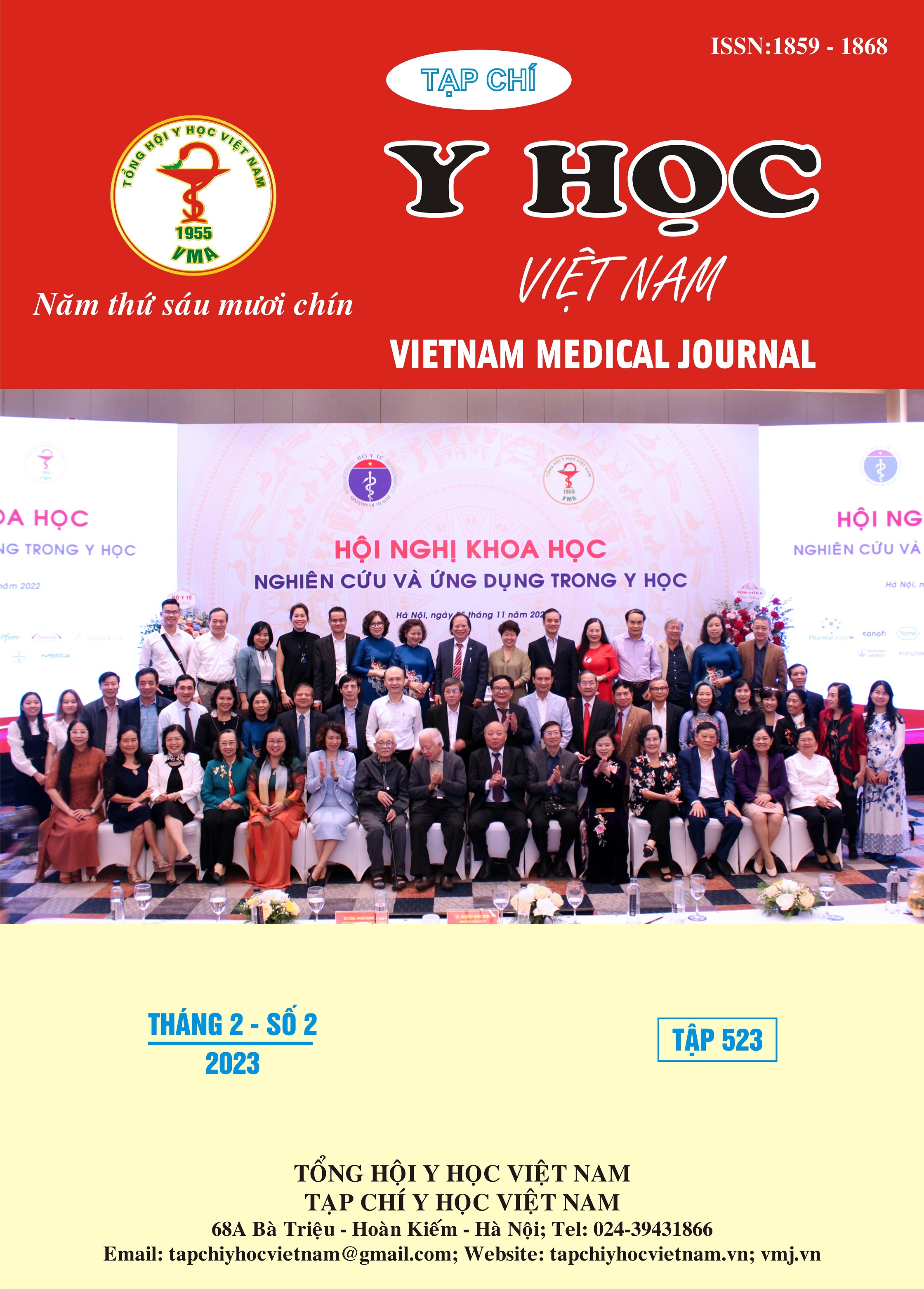CLINICAL CHARACTERISTICS AND OUTCOMES OF PATIENTS WITH OUT-OF-HOSPITAL CARDIAC ARREST IN BACH MAI HOSPITAL
Main Article Content
Abstract
Objectives: To evaluate some clinical features and treatment results of patients after out-of-hospital circulatory arrest. Subjects: 35 patients comatose after circulatory arrest were treated at the emergency department of Bach Mai Hospital from August 2016 to August 2017. Methods: descriptive prospective study. Patients were clinically assessed at the time of admission and the outcomes were recorded at discharge. Quantitative variables are presented as mean and standard deviation; using parametric tests for normally distributed variables and non-parametric tests for non-normally distributed variables; The difference was statistically significant with p < 0.05. Qualitative variables are presented as percentage (%), the difference is statistically significant with p < 0.05. Results: The rate of patients receiving CPR at the scene was 5.7%; The average time from cardiac arrest to CPR was 10 minutes, with no difference in this interval between the living and the dead; The mortality rate of comatose patients after circulatory arrest was 45.7%; CPR time ≥ 28 minutes is a high predictor of mortality with ROC = 0.755, p = 0.01 (CI95% 0.597 – 0.913); The rate of patients with Glasgow coma < 9 points at the end of treatment at the department was 68.4%; 15.8% of patients finished treatment with Glasgow score > 13; 60% of patients with Glasgow score finished treatment from 9 to 15 points and still had corneal reflexes at the time of admission. Conclusion: The rate of CPR at the scene was low; The long interval of CPR until the return of circulation is a high predictor of mortality. The corneal reflex at the time of admission has a good prognosis for neurological outcomes.
Article Details
Keywords
Out-of-hospital cardiac arrest
References
2. Booth CM, Boone RH, Tomlinson G, Detsky AS. Is this patient dead, vegetative, or severely neurologically impaired? Assessing outcome for comatose survivors of cardiac arrest. JAMA. 2004;291:870–879.
3. Lim C, Alexander MP, LaFleche G, et al. The neurological and cognitive sequelae of cardiac arrest. Neurology. 2004;63:1774–1778.
4. Hoàng Bùi Hải, Vũ Đình Hùng, Đỗ Ngọc Sơn. Kết quả khảo sát ngừng tuần hoàn ngoại viện không do chấn thương tại bốn bệnh viện ở Hà Nội theo mẫu UTSTEIN. Tạp chí nghiên cứu y học. 134(10) - 2020
5. Đặng Đức Hoàn, et al., Nhận xét về cấp cứu bệnh nhân ngừng tuần hoàn tại khoa cấp cứu bệnh viện Thanh Nhàn. Tạp chí Tim mạch học Việt Nam, 2014. 66: p. 198 – 206.
6. Đặng Thành Khẩn and Nguyễn Đạt Anh, Nghiên cứu thực trạng cấp cứu ngừng tuần hoàn ngoại viện tại Hà Nội. 2014.
7. Albaeni A, et al., Predicting Survival with Good Neurological Outcome Within 24 Hours Following Out of Hospital Caridac Arrest: The Application and Validation of a Novel Clinical Score. J Neurol Transl Neurosci, 2014. 2(1): p. 1041.
8. Oddo M, et al., Early predictors of outcome in comatose survivors of ventricular fibrillation and non-ventricular fibrillation cardiac arrest treated with hypothermia: a prospective study. Crit Care Med, 2008. 36: p. 2296-301.
9. Gremec, Stefek and Gasparovic, and Vladimir, Comparison of APACHEII, MEES, and Glasgow Coma Scale in patients with nontraumatic coma for prediction of mortality. Critical Care 2001. 5: p. 19-23.
10. Okada Kos, et al., Prediction protocol for neurological outcome for survival of out-of-hospital cardiac arrest treated with target temperature management. Resuscitation, 2012. 83: p. 724 – 739.
11. Levy DE, et al., Prognosis in nontraumatic coma. Ann Intern Med, 1981. 94: p. 293–301.


